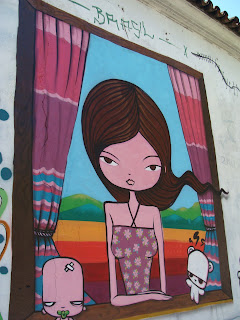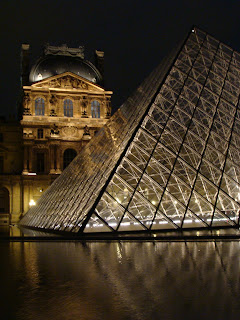Bernauer Strasse, a street on the border between the Berlin districts of Wedding and Mitte, was a focal point of the German - German postwar history. The construction of the Wall and its consequences for the residents of the divided city were especially dramatic here.
The history of this street illustrates what impact the Berlin Wall had on Berlin, how it destroyed urban space and human lives, and separated family and friends. It documents those attempting to escape the dictatorship by fleeing to the West and the efforts of many people to deny the state its claim to power by providing assistance to those wanting to flee. Just two days after the first barriers were erected, the border soldier Conrad Schumann fled to the West by leaping over the barbed wire fence.
On Bernauer Strasse the border ran directly in front of the buildings situated on the East Berlin side of the street. After barriers were erected, many residents living in these border buildings spontaneously decided to flee. Some slid down a rope from their apartment or jumped into rescue nets that the West Berlin fire department held ready. Some people were seriously injured while doing so. The first fatalities caused by the border regime also occurred on this street. The buildings were evacuated a few weeks after the Wall was erected. The remaining residents were forced to resettle elsewhere and the windows and doors of the buildings were bricked up.
The population rebelled against the barriers with protests and acts of resistance. The most famous and successful escape tunnels were dug here. The demolition of the Reconciliation Church that had stood inaccessible on the death strip ever since the Wall was built also lent Bernauer Strasse tragic fame.
The population rebelled against the barriers with protests and acts of resistance. The most famous and successful escape tunnels were dug here. The demolition of the Reconciliation Church that had stood inaccessible on the death strip ever since the Wall was built also lent Bernauer Strasse tragic fame.
The site also shows the principle function of the Wall within the SED structure of dominance. It conveys how the Wall regime functioned in everyday life and reveals the clear discrepancy between the population and the East German leadership.
Bernauer Strasse is also a place to learn about how the division was peacefully overcome. On the night of November 10, 1989, the first segments of the Wall were knocked down between Bernauer Strasse and Eberswalder Strasse to create a new crossing between East and West Berlin. The official demolition of the border fortifications began in June 1990 at the corner of Bernauer Strasse and Ackerstrasse. Today the Berlin Wall Memorial is located at this historical site.
Bernauer Strasse is also a place to learn about how the division was peacefully overcome. On the night of November 10, 1989, the first segments of the Wall were knocked down between Bernauer Strasse and Eberswalder Strasse to create a new crossing between East and West Berlin. The official demolition of the border fortifications began in June 1990 at the corner of Bernauer Strasse and Ackerstrasse. Today the Berlin Wall Memorial is located at this historical site.
Font:
http://www.berliner-mauer-gedenkstaette.de/en/the-historical-site-11.html














































